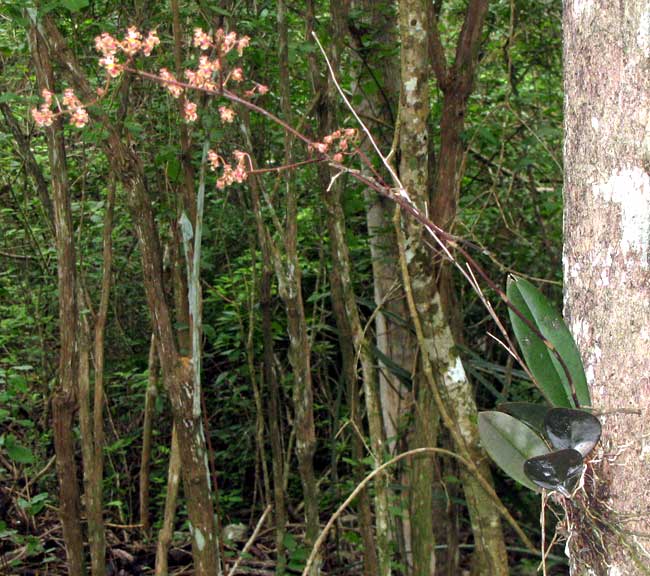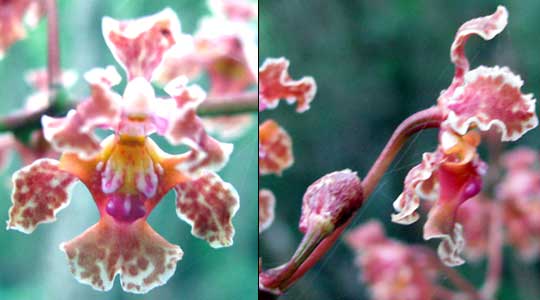Excerpts from Jim Conrad's
Naturalist Newsletter

from the July 18,, 2010 Newsletter issued from Hacienda Chichen Resort beside Chichén Itzá Ruins, central Yucatán, MÉXICO; limestone bedrock, elevation ~39m (~128ft), ~N20.676°, ~W88.569°
MULE EAR ORCHID
Deep in the forest atop a low mound you might not guess once was a Maya structure, one never excavated so maybe still holding secrets, a little orchid in full bloom grew in dim light on the side of a tree. That's it above.
It's TRICHOCENTRUM OERSTEDII, widely distributed from southern Mexico south to Costa Rica. Because of the leaf's shape and because often two leaves arise together, it's part of a group of orchids known as "Mule Ears."
Many orchid genera produce flowers at the end of a stem arising from the plant's center. Muls Ears are different from them in that they produce special inflorescences, or flowering heads, on stems arising apart from the tufted leaves. Also, the stems of inflorescences of many genera keep growing year after year, but this group's inflorescences do all their growing in a single year. Many orchid species sprout their inflorescences and leaves from conspicuous, more or less egg-shaped, water-storing, photosynthesizing parts of the stem known as pseudobulbs, but these orchids don't have pseudobulbs.
You can see front and side views of a flower below:

I had problems getting this orchid to species level. In the end, orchid expert Ethian Licona via iNaturalist recognized it, and thanks to him.